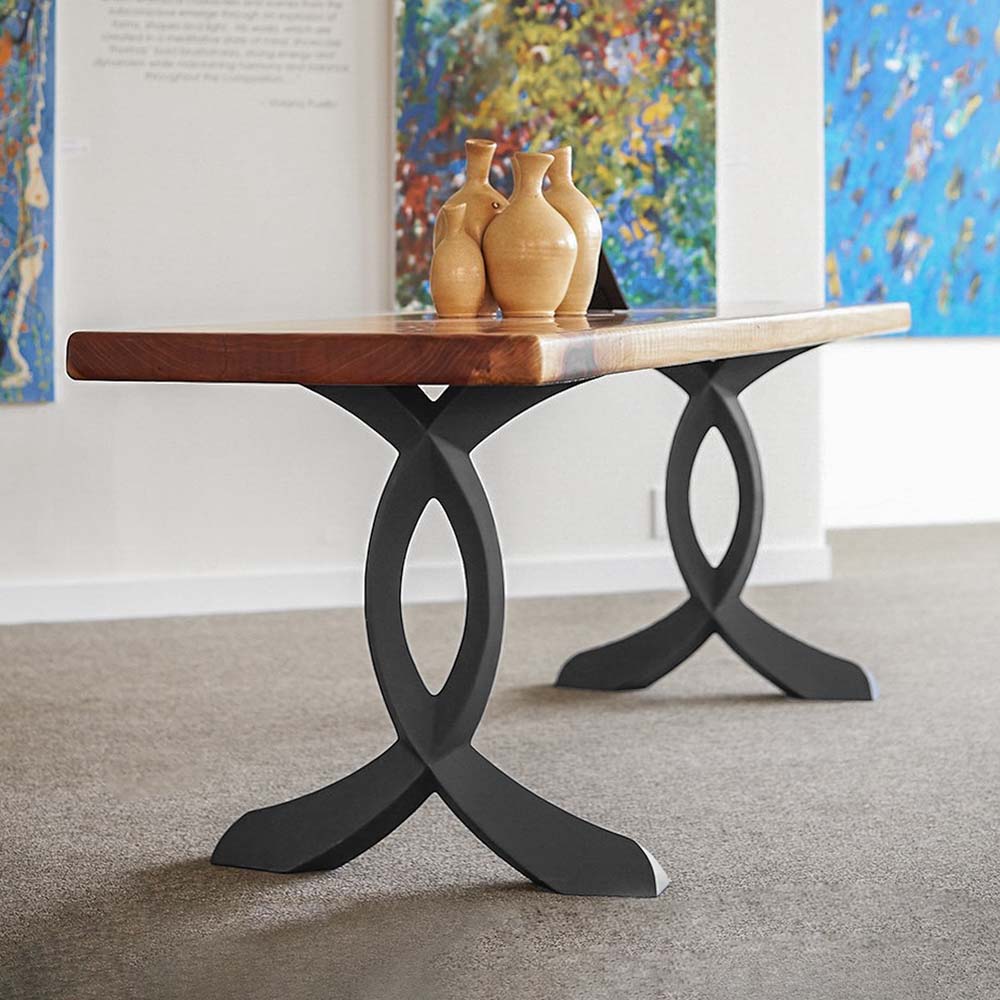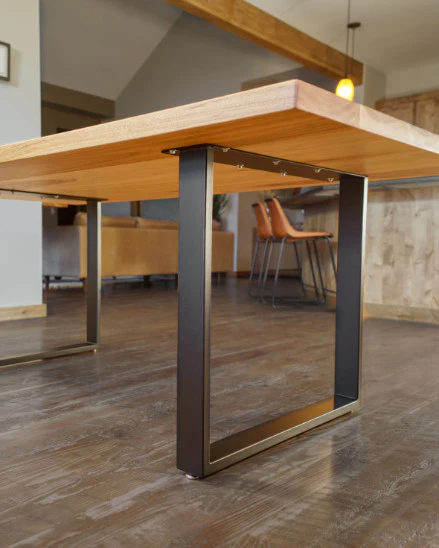Dining Room Table Legs: What to Think about Before You Purchase
Dining Room Table Legs: What to Think about Before You Purchase
Blog Article
Picking the Perfect Dining Table: What Styles Work Best for Your Home?
Selecting the optimal table for your home can be a nuanced process that balances looks and functionality. Whether your space leans towards typical beauty, modern minimalism, rustic beauty, or industrial posh, the selection of styles offered can deal with varied tastes. Each layout supplies special advantages and obstacles that can either boost or disrupt your eating area's harmony. Comprehending how different products, shapes, and sizes interact with your existing decoration is critical. To browse these options properly and discover a table that genuinely complements your home, consider the following facets thoroughly.
Assessing Your Space
Examining the measurements and format of your dining location is a critical very first step in picking the excellent table. Begin by measuring the length and size of the space, accounting for entrances, windows, and other building functions that can affect table placement. This makes sure that your table not just fits however also enables for comfortable activity around it.
Think about the variety of individuals you generally amuse. A table ought to fit your home's daily demands while supplying adequate flexibility for periodic guests. As a rule of thumb, assign at the very least 24 inches of table size per person to ensure a comfy dining experience.
It's additionally vital to keep suitable clearance around the table. Ideally, there must go to the very least 36 inches in between the table side and wall surfaces or other furniture, enabling very easy access and movement. For rooms where chairs with arms or extra storage space systems like buffets are included, enhancing this clearance to 48 inches is recommended.
Illumination and ambience play substantial functions. Make certain that your table lines up with existing illumination fixtures or plan for sufficient lights services. This comprehensive spatial evaluation assurances that your table not only fits physically but also harmonizes with your room's total capability and aesthetic.
Popular Table Styles

Standard table usually feature elaborate details, bent legs, and abundant wood coatings, evoking a sense of classic style. They are ideal for homes with traditional decoration or those aiming to add a touch of class to their dining area.
Modern dining tables prioritize simplicity and tidy lines, commonly integrating products like glass and metal. These tables are ideal for modern spaces, supplying a streamlined and minimalist appearance that enhances minimal style ideologies.
Rustic eating tables, on the other hand, emphasize all-natural materials and a handcrafted look - dining room table legs. They typically feature reclaimed wood and a distressed coating, producing a cozy and welcoming ambience. These tables function well in farmhouse-style homes or those looking for a cozy, organic feeling
Industrial dining tables incorporate basic materials such as steel and timber, commonly showcasing a practical visual. This design is well-suited for loft spaces or urban spaces, including a touch of rugged charm and longevity to the dining experience.
Each design supplies unique benefits, making it vital to pick one that lines up with your home's general design and your individual preferences.
Product Options
When picking a dining table, the choice of product plays an important duty in identifying both the table's looks and performance. Timber, steel, glass, and composite products more helpful hints each offer special benefits and difficulties, making it vital to align the product with your home's design and way of life demands.
Timber is a timeless and versatile choice, readily available in ranges such as oak, walnut, and mahogany. Understood for its longevity and warmth, timber complements both typical and contemporary interiors. It requires normal maintenance to protect against scrapes and bending.
Steel tables, typically crafted from stainless steel, light weight aluminum, or wrought iron, are praised for their modern charm and robustness. They are especially fit for industrial or visit this website minimal settings however can be prone to damages and may really feel cool to the touch.
Glass table bring an air of elegance and visibility, suitable for smaller spaces as they produce an impression of more area. While easy to clean, glass can be at risk to spots and requires careful managing to prevent chips and fractures.
Composite products, such as MDF and plywood, deal cost-effective and customizable solutions, though they may do not have the longevity of all-natural products. Choosing the appropriate product ensures your eating table is both a practical property and a visual pleasure.
Shape and Dimension Factors To Consider
After figuring out the ideal material for your dining table, the next consideration is choosing the ideal sizes and shape to match your space. The form of the table substantially influences the area's aesthetic and performance. Rectangle-shaped tables, one of the most common shape, are ideal for larger rooms and can accommodate a greater number of guests. They likewise permit an extra official dining experience. Alternatively, rounded tables cultivate a feeling of affection and are exceptional for smaller dining areas, motivating conversation by removing edges and making everyone really feel equally consisted of.
Dimension is just as crucial and need to be dictated by both the room's measurements and the variety of individuals you intend to seat regularly. Generally of thumb, allot a minimum of 24 inches of table width each to make certain comfy dining. In addition, take into consideration the table's clearance area: there must go to least 36 inches between the table side and the walls or various other furniture. This ensures that diners can move quickly without feeling confined. Expanding tables supply versatility if you often host bigger events, supplying added seats when required without occupying extra room daily. Selecting the appropriate sizes and shape makes certain both functionality and visual consistency in your eating area.
Matching Your Style
Selecting a dining table that integrates with your existing decor is crucial in producing a natural and inviting room. Begin by evaluating your existing interior layout style, whether it be contemporary, typical, rustic, or eclectic. The table ought to enhance the overall visual, not take on it. A smooth, minimalist table with tidy lines is excellent for a modern-day home, while a vintage, luxuriant table fits an extra conventional setup.
Color and material are just as significant. If your decoration includes cozy tones and natural materials, take into consideration a wooden table to enhance the natural feeling. On the other hand, a glass or metal table may be better in a room controlled by amazing shades and industrial aspects. Take notice of the finish, as it ought to mirror various other furniture and fixtures to maintain harmony.
Structure plays an essential function as well. A rough-hewn, reclaimed timber table can add personality to a rustic space, while a refined marble surface area can elevate a luxurious eating location. Take into consideration the range and percentage you can check here of the table in relation to the space size and existing furnishings. A well-matched table not only improves visual appeal but additionally enriches the total eating experience.

Conclusion
Choosing the excellent table requires mindful factor to consider of space, style, materials, form, and dimension (dining room table legs). Traditional tables complement traditional interiors with abundant timber coatings, while modern tables suit contemporary settings with glass and steel. Rustic layouts present heat via natural materials, and industrial styles enhance metropolitan atmospheres with raw aspects. Integrating the table with existing style ensures both functionality and visual charm, adding to a natural and cosmetically pleasing eating location.
Report this page